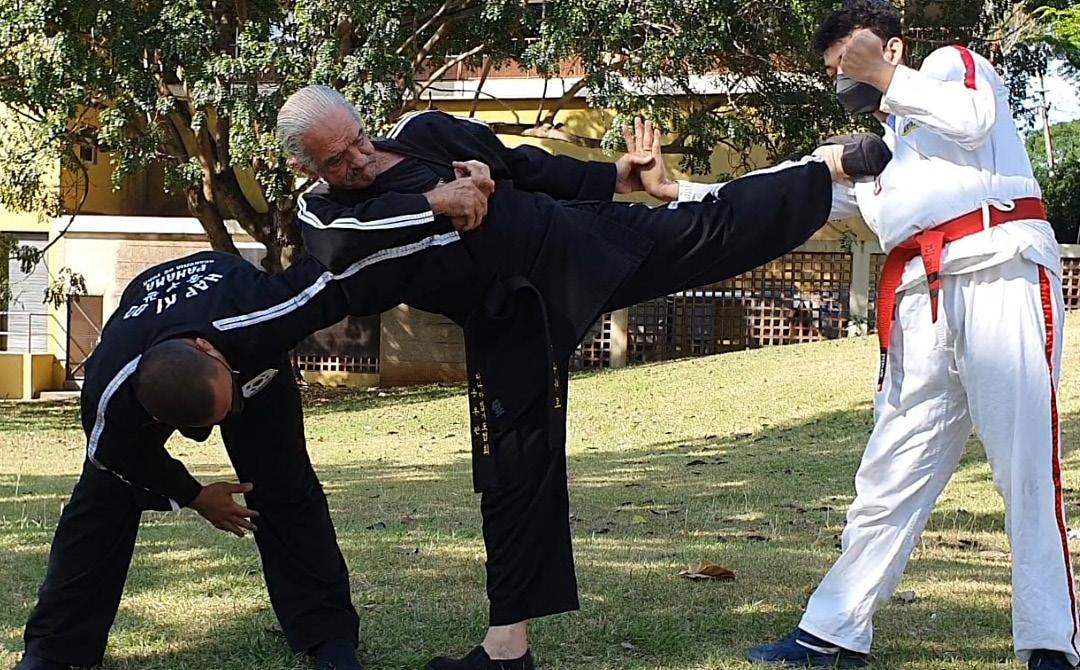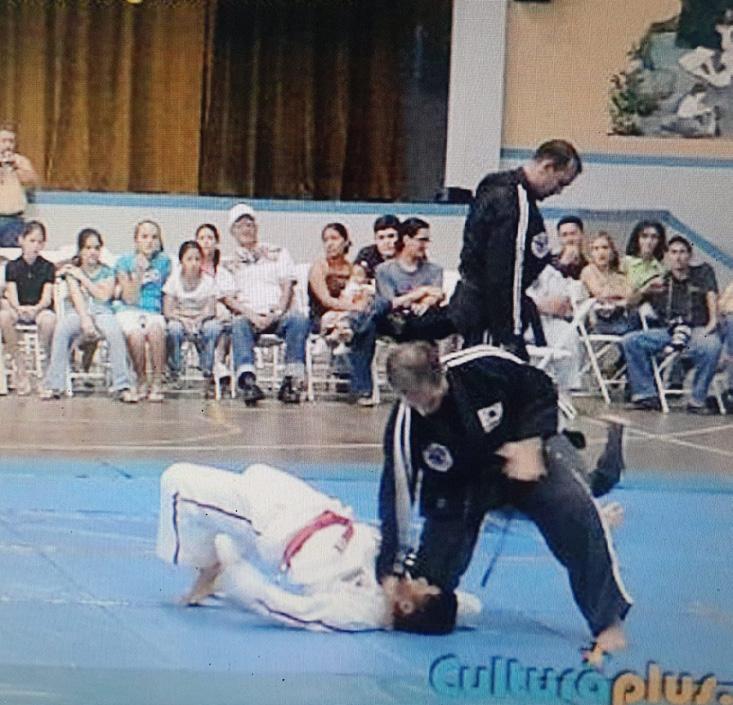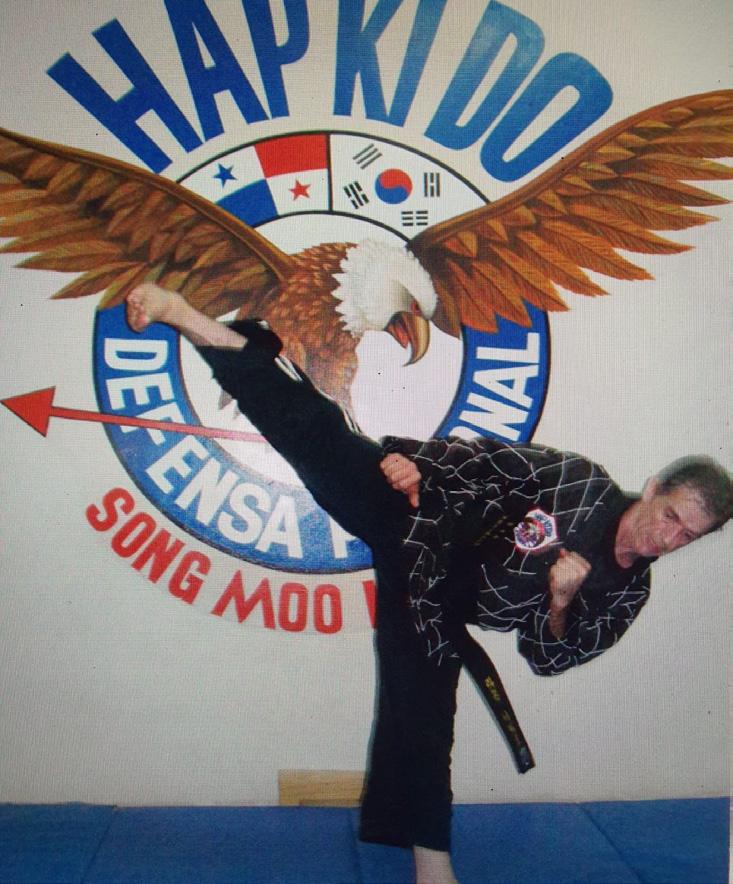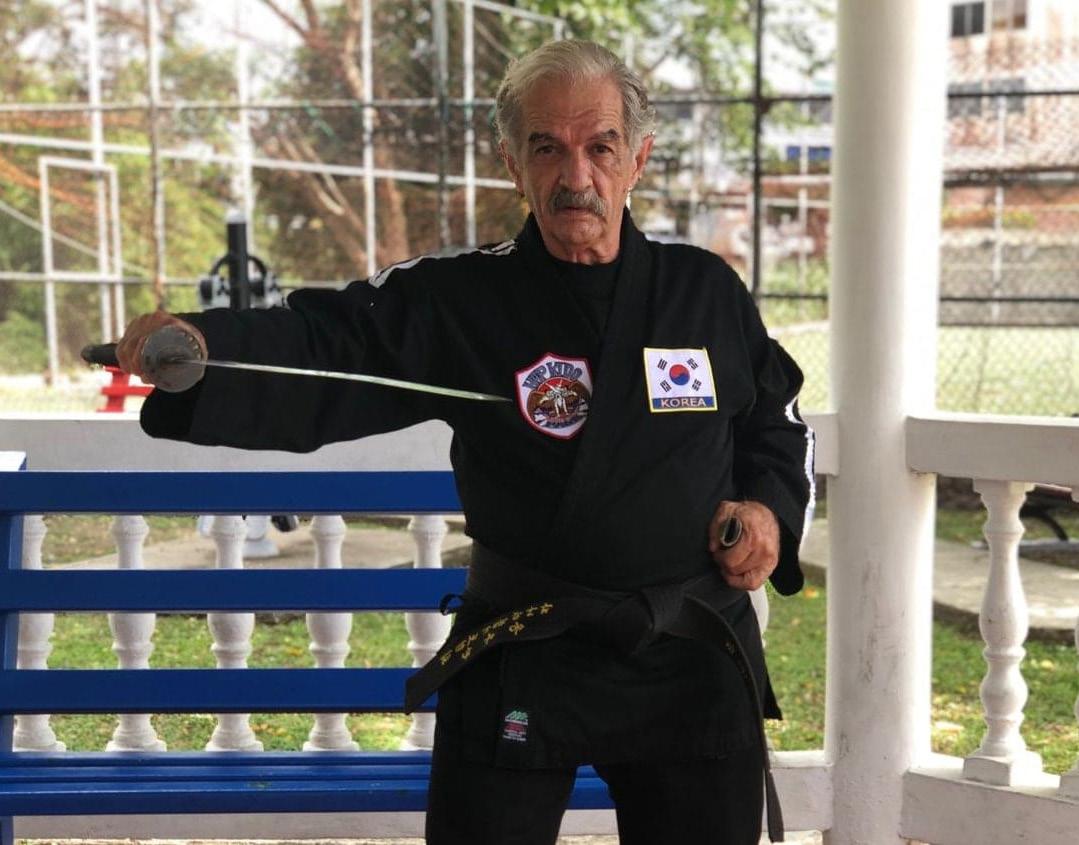
7 minute read
SOME HISTORY OF KOREA AND ITS MARTIALITY SBN Ramón Navarro
SOME HISTORY OF KOREA AND ITS MARTIALITY
Sbn Ramón Navarro
Advertisement
Happy christmas on this blessed year 2022 and I wish you all a prosperous and beneficial New Year 2023.
I, Ramon Navarro from the Republic of Panama with experience teaching for 46 years as SabomNim of Song Moo HapKiDo, I´m technical director for the International Song Moo Kwan HapKiDo Federation.
We are expanding seriously and responsibly, maintaining the discipline that KwanjangNim SongIL Park 9th Dan Black Belt has taught us, whom is the father of HapKiDo in Panama as well as the founder of this pure self-defense system for the street.
I am forming groups in different Latin American countries preferably, although I together with Grand Master Park expanding to any country in the world. For this the people interested can contact me by WhatsApp at the number +507 67808222 so I will let you know that we are not accepting or giving rank just for belonging to our organization since we work with a specific learning curriculum but if you already have experience teaching any martial art regardless of where you are from or what your martial art is, I am willing to form a working plan by receiving a virtual class as long as you are a serious and dedicated person whom is willing to make changes, we are for you and your country.
All human race present in this era was due to its past history. Panama has a history as a country since November 3, 1903 and according to its history or where it came from, it was Colombian and before that from Spain. Well, this is not the subject here, however, the martial art that I train, learn and teach since February 1977 as assistant to Grand Master Park, SongIL whom started in this martial art, Hap Ki Do or HapKiDo at the school from DojuNim Ji, HanJae whom is known and accepted to be the father of modern HapKiDo.
For us, the father of HapKiDo is DojuNim Choi YongSul, who had the Daito Ryu Aiki Ju Jutsu with the nickname of Yawara, which indicates that it is an art of self-defense from ancient Japanese tradition. To this name its translation into Korean is DaeDong Ryu HapKi Yu Sul and it was known as HapKi Yu Sul but since punches and few kicks were added, fist or Kwon was added so it became Hap Ki Yu Kwon Sul. We all know the history or those of us who know it know that this was approximately after the 2nd World War, that is, in 1945 and when he began to teach it and several years later in 1949 a boy began to learn this art during his high school until he graduated and when he returned to his hometown AnDong in South Korea was Ji HanJae.
Ji HanJae at about 19 years of age in his hometown AnDong had earned the 2nd Dan Black Belt from Grandmaster Choi, YongSul and there he did not want to teach to continue training because he wanted to learn, but no one taught this HapKi Yu Kown Sul there so he met Taoist Master Lee or Lee DoSa from whom he learned Tae Ki Yun or Tae Kyun in the art of Sam Rang Do in which he was able to advance rapidly from his previous experience in the HapKi Dojang of Grandmaster Choi. When he was about 23 years old, he quickly achieved the equivalent of the black belt and at that moment he thought about what he believed was or was not practical in these two martial arts and eliminated what did not seem practical and, let's say, mixed them, staying with what he wanted and called it HapKiDo.
He saw that this TaeKyun had many kicks, kicks with jumps and spins, as well as acrobatics plus self-defense techniques or what they call in Korean HoSinSul and by evolving and modifying them, he was left with a wide range of techniques and without such a long story he achieved the format for which this martial art is known for.
This martial art seemed complete and it really was. Worldwide it is taught in two ways either in pure form or

not and it is taught without a logical order or with a logical order even forms were added and it can be taught in the original way without forms. Some schools and organizations have combat competitions, others not even there are schools that do not do combat or DaeRyun and there are others in which they do practice it without going to competitions, there are also those that allow students to compete in open tournaments but they themselves in their organization have no tournaments.
Speaking of history, it is known that this land called Korea has written history since 2,333 BC, well, which brings us to the present a century ago, that is, around the year 1909 Japan took Korea, annexing it to its territory until the end of the World War II and there is no record of what arts were there before that can be said are Korean arts with the exception of these two: Sireum or Ssireum as well as TaekKyun or TaeKyun.
This Sireum is an ancient fight that by tradition is still trained today and it is said that it is where Sumo comes from, but this Sireum is totally different. The other Korean martial arts are based on the stairght line like linear Karate. In Korea there is YuDo that differs from JuDo in that pressure points are used to throw and punches and kicks are allowed in Most of the Korean martial arts being linear in what it is strength against strength. I think the exception is in HapKiDo, which is more of a hybrid. Since the Yudo being circular and the TaeKwonDo of WT or from the KukKiWon like the one from the ITF or the TangSooDo and SooBahkDo are linear. In this case, HapKiDo has both linear and circular aspects. I have wondered why and I think it is its military aspect in that in the middle of a conflict where one has to face several enemies, I will not say opponents since the enemy will do everything possible to take your life were you cannot lose in a confrontation against several and at the time in a floor fight or fighting.
There are other martial arts with different names that are HapKiDo with forms or weapons, whether they are martial or modern weapons, and even if they call it differently, that is progress. What else can I say lol. I can only say that the circular type has a similarity and the linear ones too and if I said that there is only one style in JuDo and TaeKwonDo, TangSooDo too. In HapKiDo there are many styles and if you wonder why I think it is because the root of this martial art was formed so that the student does not have to adapt to the method rather the method of this martial art was made so that it could be adapted to the person since it is based on the natural movements of the human being that the student when developing can form his own method or system. Of course, if you keep your base or your teachers, this will form a great organization and many activities can be carried out.
Once again, I am SabomNim Ramón Navarro 6th Degree Black Belt from the Republic of Panama, a member of the Korea HapKiDo Federation with the representation of KHF Panama Branch as technical director and the president of the International Song Moo Kwan HapKiDo Federation for the development and expansion of this system as well as an assistant to Grandmaster Park, SongIL 9th Degree Black Belt who is the founder of Song Moo Kwan HapKiDo since 1975 when he registered in Korea as a member of the Korea HapKiDo Federation since he started learning Sung Moo Kwan HapKiDo from DojuNim Ji HanJae in 1958.
Additionally, you can contact me on Instagram at @hapkido.panama or @rana_hapkido_panama, you can also call or write to WhatsApp +507 67808222.
Merry Christmas and a prosperous year 2023.












